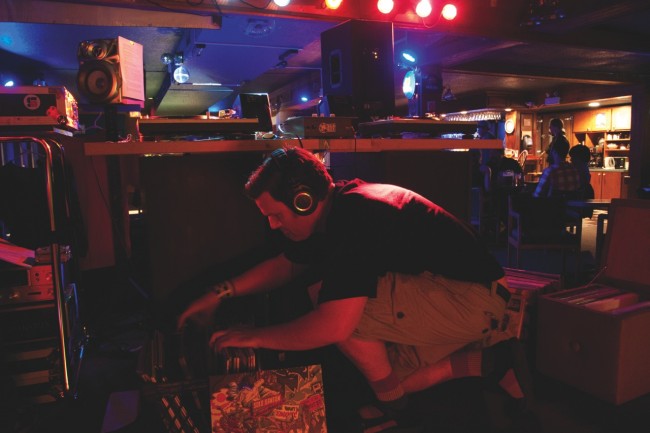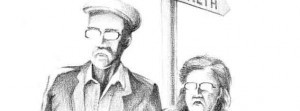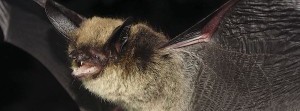
Enter the DJ: Electronic music in the North
The room is dark. It’s hot and humid from the combined body heat of hundreds of people crammed into a small space. On the stage is not what you might expect to see at a music gig: there’s no drum kit, no microphones, no guitars. Instead of the usual assortment of instruments, there’s a variety of electronics including two turntables.
On the floor are a few crates containing records—yes, vinyl records. But these are not the same records as those in your parents’ dusty collection, now relegated to the attic or the garage. These are new records, imprinted with music with the electronic DJ in mind.
An unassuming man takes the stage. He pulls out a record and eases the needle into the groove. Sound erupts from the speakers, bass thudding through the floor like a bomb went off in the basement. The crowd bursts like a wave onto the dance floor; they’ll stay there for the next two hours.
On stage, the DJ chooses record after record, playing two at a time, beats synchronized, building tune over tune with both precision and spontaneity. He checks the dance floor to see if what he’s doing is working. Smiling faces and a sweaty, seething mass of gyrating bodies tells him it is. Welcome to the electronic music scene.
Not as easy as it sounds
Electronic music has its origins in counter-culture or subculture, but in the past 10 years or so it has found its way into the mainstream: commercials, TV shows and film scores have all featured electronic music. Here in northern BC, the electronic music scene still feels decidedly subculture. But that may not be a bad thing.
For those readers who aren’t familiar, here are the mechanics of DJing. First, the equipment: two turntables (high-torque, designed for DJs), a mixer to isolate each side or blend them together, headphones, and high-powered speakers. Take two records and start one playing on the left while listening to the one on the right through the headphones. Manipulate the record on the right, using pitch control on the turntable and your hand to control the record itself, until its tempo matches the rhythm of the record on the left. Pick an appropriate spot in the tunes to mix the two together and release. Use the mixer to let both records play through the speakers simultaneously.
It’s not as easy as it sounds. A good DJ will make these transitions seamless and go even further, using the sounds from one record layered over another to create something new.
“You can summarize a DJ as a glorified cover-band,” says Ben Anderson, a Smithers-based DJ and radio host. “But there’s an art form to spinning records.” Anderson, who goes by the DJ name, GOBE, moved to the North in 2010 from Victoria where he was a successful DJ. “GOBE is an acronym for Giant Oscillated Bass Explosions,” he says. “In Victoria, I was with many different DJ crews, playing many different venues: all-night parties, clubs, restaurants, art galleries.” Most recently, Anderson played with a group called sub | division. “We were pushing the boundaries of bass music and bringing in artists before they got big. Me and two other guys—Rhythmicon and Frame—were the standard local openers for any kind of big show coming through. We played shows from 200 to 800 people.”
In the North, DJ culture isn’t as widespread, nor is it properly understood. “There are a lot of misconceptions about what a DJ is and what a DJ can do,” Anderson continues. “A DJ is a storyteller. For me, being a DJ is expressing myself in the tunes I want to play and the tunes I want people to hear, but it’s also about creating a narrative between the selector—the guy [or girl] on the turntables—and the people on the dance floor. You’ve got to tell a good story.”
When Anderson first moved to Smithers, he didn’t find an electronic music scene like the one he left in Victoria. “There’s not exactly a club culture up here, and that’s primarily where someone would go to check out electronic/DJ music,” he says. “But then I found out about a new radio station—CICK—and I connected with those guys and started doing a radio show. That was my contribution to trying to create some kind of culture of the DJ variety.”
Electronic radio
Using radio to expose the public to subculture music is certainly not a new idea. While electronic music is occasionally played on commercial stations and on the CBC, many genres aren’t played and lots of amazing artists are left struggling without exposure. These days, it’s up to campus and community stations to represent those artists and simultaneously expose listeners to genres that are harder to access.
In 2010, Smithers Community Radio started broadcasting on the frequency 93.9 FM. Playing a wide variety of music styles—including several electronic genres—the station has become something of a hub for new, quirky music that northern residents would otherwise never get a chance to hear. “The primary music culture here is live music,” says Anderson, “but when you introduce something like dance music, especially to the younger generation, they do want to hear something different, something that isn’t folk music—the beats, the bass.”
Anderson’s show—Sub Low One Bloc, or SLOB—not only exposes local listeners to genres like dubstep and to live DJing on turntables, it also supports electronic artists from around the world. “I think more people are getting behind electronic music, both listening to it at a home level, and going out and checking it out live when it does happen,” he says. “With the radio station, there was an initiative by some of the DJs to do DJ nights, where the focus of the night is to represent the best of electronic music, whether it be dub reggae or techno or whatever. There’s starting to be more of a choice in the valley for what you can listen to.”
For the record
“I spin vinyl,” says Anderson. “I keep it analog as much as possible. At the end of the day, I’m a vinyl junkie.” After starting his show on the radio station, he was asked to DJ with local groove band, Dubtonic. His first live show was at Smithers’ microbrewery. “I brought over my gear and set it up in the lovely Plan B premises and I played a lot of different records and kind of shocked people,” he recalls. “Shock in the sense of ‘Whoa, what is this?’ not “Agh!’,” he laughs. “More like, ‘This guy’s playing some music that we don’t really hear very much up here.’ That was the start.”
The scene in the north is still small and new, but, as Anderson explains, that can be great for those involved. “It’s nice to be part of something that’s fresh. When you’re exposing new music to a new generation—or even to an older generation—there’s a lot of energy and excitement: happy faces dancing all night is fairly fulfilling. It’s great to be a part of something like that.”



